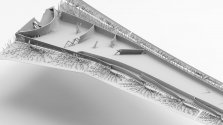That is another important indication of J20 using 3D printing.Might also be why we have seen bigger production of the J20 from around the 2019ish.
In the same 2012 presentation, Wang Huaming said
f22的机翼和机身连接件,**超复杂的钛合金构件,因为太复杂20、30万吨的水压机也做不出来。美国人就分成三个铸件,然后热等静压再焊接,铸件的性能很差,但美国人没办法,f22就是这样用的。
F-22 connector of wing and fuselage, complicated structure. It is made from three ingots (cast), then HIP (Hot Isostatic Pressing), then welded together. The property of casting is inherently bad. (Making it not lasting. Probably the reason that F-22 is not produced in numbers expected.)
Titanium welding may achieve good quality, it's input is casting which is inherently bad. So the final product is still bad. If there is any other choice (3D printing), CAC would not use casting+HIP+welding. Otherwise J-20 would end up as useless as F-22. PLAAF would have waited another year for 3D printing to be ready, or choose SAC to do it.
美国F-22飞机中尺寸最大的Ti6Al4V钛合金整体加强框,零件重量不足144 kg,而其毛坯模(cast ingot)锻件(forging)重达2796 kg,材料利用率不到4.90%,数控加工(CNC)周期长达半年以上
The central bulkheads are made by casting 2796 kg ingot, then pressed, then machined to only 144 kg. The CNC machining process takes more than half year.
If it takes more than half year to make a bulkhead, we would not be able to see the production speed of J20 that we are seeing.
Last edited:


